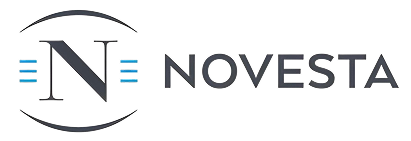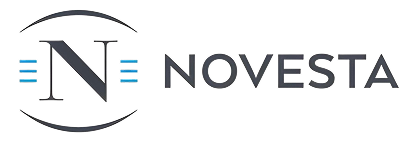Construction schedule failures cost the Canadian industry $5.2 billion annually through cascading delays, with 71% of projects finishing late by average margins of 4.7 months—destroying financing arrangements, triggering penalty clauses, and bankrupting contractors whose cash flows cannot survive extended timelines. This schedule control guide reveals proven frameworks for critical path management, look-ahead planning, and pull-planning systems that reduce delays by 65% while improving trade coordination by 80%—transforming chaotic construction sites into synchronized operations where every activity flows smoothly into the next.
Table of Contents:
- The Problem: Why Traditional Scheduling Creates Cascading Failures
- What to Consider: Modern Schedule Control Framework Components
- How to Choose: Implementation Systems for Schedule Success
- Novesta Projects’ Schedule Excellence Framework
- Frequently Asked Questions
The Problem: Why Traditional Scheduling Creates Cascading Failures
The Critical Path Mythology Crisis
Traditional critical path method (CPM) scheduling promises mathematical precision in predicting project completion, yet 83% of construction schedules prove worthless within 60 days as reality destroys theoretical sequences, dependencies prove wrong, and durations miss by 40-60%. This planning fallacy creates false confidence while hiding systemic problems that guarantee delays from project inception.
The fundamental flaw in CPM scheduling lies in assuming perfect information and execution in chaotic environments. Activity durations get estimated without considering learning curves. Logic ties assume independence between activities. Resource availability gets ignored completely. Weather impacts receive token consideration. Coordination requirements disappear in abstract relationships. These oversimplifications create schedules bearing no resemblance to actual construction.
Critical path scheduling failures:
- Duration estimates ignoring productivity reality
- Logic relationships missing actual dependencies
- Resource constraints absent from calculations
- Float consumption without consequence tracking
- Update frequencies inadequate for control
The float evaporation phenomenon destroys schedule resilience before construction begins. Procurement delays consume float immediately. Design clarifications eat schedule cushion. Permit approvals extend beyond assumptions. Early activities slip without consequence awareness. By construction start, all float has vanished, making every activity critical. This pre-construction float consumption creates zero-tolerance schedules where single delays cascade throughout projects.
The update disconnect between planned and actual progress renders schedules meaningless for control. Monthly updates lag reality by weeks. Progress reporting reflects payment desires rather than actual completion. Logic changes go undocumented. New activities appear without integration. Delays get hidden through manipulation. The construction standards require schedule updates yet most become fiction supporting payment applications rather than management tools.
The Look-Ahead Blindness Epidemic
Construction operations focus on today’s crisis while tomorrow’s problems develop invisibly, with 67% of delays stemming from issues visible weeks in advance but ignored until they hit critical paths. This temporal blindness creates reactive management where prevention becomes impossible and acceleration costs explode as crews mobilize for emergencies rather than planned work.
The coordination vacuum between trades working in isolation generates massive inefficiencies. Mechanical contractors arrive finding incomplete framing. Electrical crews discover missing backing. Plumbers encounter occupied spaces. Finishers face incomplete rough-ins. Inspectors find work not ready. Each trade’s efficiency drops 30-40% due to predecessor failures invisible in master schedules.
Look-ahead planning failures:
- Prerequisites unchecked until needed
- Resource conflicts discovered at mobilization
- Material deliveries uncoordinated with installation
- Inspection readiness assumed not verified
- Weather windows missed through poor planning
The constraint blindness affecting most projects ignores bottlenecks until they strangle progress. Single cranes serving multiple trades create queues. Hoists become congested highways. Staging areas overflow with materials. Access routes get blocked. Power supplies prove inadequate. These constraints, obvious with foresight, become crisis discoveries.
The information lag between field reality and office planning creates parallel universes. Field knows problems weeks before office. Office makes decisions on outdated information. Plans reflect yesterday’s assumptions. Schedules show theoretical progress. Reports paint rosy pictures. This disconnect guarantees that problems mature into crises before recognition. The project management certification emphasizes real-time information yet construction remains stuck in weekly or monthly cycles.
The Push-Planning Dysfunction
Traditional push-planning where managers dictate schedules to trades creates commitments without capability, forcing unrealistic timelines that trades know cannot succeed but accept to avoid confrontation, generating 45% schedule failure rates as imposed deadlines meet resource reality. This top-down scheduling ignores field knowledge while creating schedules that look good on paper but fail in execution.
The commitment reliability crisis emerges when trades promise completions they cannot deliver. Superintendents demand dates. Foremen agree under pressure. Schedules show commitments. Reality proves different. Promises break immediately. Trust evaporates rapidly. Collaboration becomes impossible. This reliability breakdown transforms scheduling into wishful thinking.
Push-planning dysfunction patterns:
- Imposed durations without trade input
- Ignored resource constraints
- Unrealistic productivity assumptions
- Missing coordination requirements
- Blame culture when plans fail
The learning disability preventing improvement stems from push-planning’s blame orientation. Delays trigger finger-pointing. Failures generate excuses. Problems get hidden. Lessons go unlearned. Patterns repeat endlessly. Organizations cannot improve when failure analysis focuses on blame rather than systemic causes.
The cascade acceleration as delays compound through push-planning creates exponential problems. Initial delays seem manageable. Compression appears possible. Resources get stacked. Productivity drops. Quality suffers. Rework increases. Delays multiply. Costs explode. The commercial real estate trends show push-planned projects experience 3x more acceleration costs than pull-planned alternatives.
The Update Theater Performance
Schedule updates become elaborate performances where percentages complete get manipulated, delays get hidden, and reports show progress while projects fall further behind—with 58% of schedule updates containing fictional progress designed to support payment draws rather than reflect reality. This update theater destroys schedule credibility while preventing corrective action until collapse becomes unavoidable.
The percentage complete gaming where arbitrary progress percentages support payment applications corrupts schedule integrity. Activities 50% complete remain so for months. Suddenly jump to 90% for billing. Linger at 95% indefinitely. Complete overnight when needed. These manipulations make schedules worthless for planning while hiding developing problems.
Update manipulation tactics:
- Progress inflation for payment draws
- Delay hiding through logic changes
- Float manipulation masking slippage
- Activity splitting concealing delays
- Milestone sliding maintaining illusions
The baseline amnesia where original schedules disappear prevents accountability. Baselines get revised monthly. Changes go undocumented. Original commitments vanish. New normal emerges. Performance measurement becomes impossible. Success gets redefined continuously. This baseline erosion eliminates ability to identify systemic problems.
The narrative creativity in schedule updates explaining why delays aren’t really delays reaches absurd levels. Weather becomes unprecedented. Suppliers face unique problems. Labor shortages appear unexpectedly. Coordination issues emerge surprisingly. Every delay has special circumstances. The building codes don’t change yet somehow create surprises. This creative writing prevents honest assessment of performance.
What to Consider: Modern Schedule Control Framework Components
Dynamic Critical Path Management
Modern critical path management recognizes schedule fluidity, implementing dynamic systems that adapt to reality while maintaining focus on genuine completion drivers rather than theoretical sequences that become obsolete immediately.
Rolling Wave Planning Implementation: Detailed scheduling for near-term work with progressive elaboration for future activities provides accuracy where needed while maintaining flexibility. Next 4 weeks get hour-by-hour detail. Following 4 weeks receive daily granularity. Next 3 months show weekly activities. Beyond remains at milestone level. This rolling wave approach focuses effort where it matters while avoiding false precision in distant planning.
The detail threshold optimization balancing planning effort with control needs varies by project phase. Foundations require hourly coordination. Structure needs daily synchronization. Envelope demands weekly planning. Interiors float with bi-weekly adjustment. Commissioning returns to daily detail. This variable granularity matches planning intensity to coordination complexity.
Critical path management elements:
- Rolling wave detail progression
- Dynamic logic updating
- Resource-loaded scheduling
- Constraint-based sequencing
- Probabilistic duration analysis
Resource-Loaded Reality: Incorporating actual resource availability into critical path calculations reveals true project drivers. Crane availability drives vertical construction. Elevator installation enables interior work. Power availability determines commissioning. Labor availability constrains everything. These resource constraints, ignored in traditional CPM, determine actual critical paths.
The constraint identification through resource loading exposes hidden critical paths. Shared equipment creates bottlenecks. Specialized trades limit progress. Material deliveries drive sequences. Access restrictions control flow. Weather windows determine timing. The construction safety regulations add constraints through required procedures that affect sequencing.
Monte Carlo Simulation Benefits: Probabilistic analysis using Monte Carlo simulation provides realistic completion forecasts acknowledging uncertainty. Optimistic scenarios show best cases. Pessimistic projections reveal risks. Most likely outcomes set expectations. Confidence levels guide contingency. Sensitivity analysis identifies leverage points. This statistical approach replaces false precision with confident ranges.
The duration distribution recognition that activities follow probability curves rather than fixed durations improves accuracy. Learning curves affect early activities. Weather impacts create seasonality. Productivity varies with conditions. Coordination adds uncertainty. These distributions, when modeled, provide 85% forecast accuracy versus 40% for deterministic schedules.
Look-Ahead Planning Excellence
Effective look-ahead planning extending 4-6 weeks provides sufficient visibility for constraint removal while maintaining accuracy, transforming reactive scrambling into proactive preparation that enables smooth workflow.
Six-Week Window Optimization: The six-week look-ahead window provides optimal balance between visibility and accuracy. Week 1-2 focuses on execution. Week 3-4 enables final preparation. Week 5-6 identifies constraints. This structure provides sufficient time for constraint removal while maintaining planning accuracy.
The constraint categories requiring systematic screening include:
- Design information completeness
- Material delivery confirmation
- Labor availability verification
- Equipment readiness assessment
- Predecessor completion status
- Inspection scheduling alignment
- Weather window identification
Make-Ready Process Implementation: Systematic constraint removal through make-ready processes ensures work faces no impediments when scheduled. Information gets verified complete. Materials get staged properly. Labor gets confirmed available. Equipment gets tested ready. Space gets prepared adequately. Permits get obtained timely. This preparation eliminates 75% of delays.
The responsibility assignment for constraint removal accelerates resolution. Design constraints go to architects. Material issues reach procurement. Labor problems hit supervision. Equipment needs contact maintenance. Space conflicts reach coordination. Permit delays escalate to management. Clear ownership drives action.
Look-ahead planning components:
- Constraint identification logs
- Make-ready checklists
- Responsibility assignments
- Resolution tracking
- Readiness confirmation
Workable Backlog Development: Creating workable backlogs of ready activities provides flexibility when primary plans encounter problems. Alternative work gets prepared. Materials get staged. Resources stay productive. Progress continues despite obstacles. Idle time disappears. This flexibility improves productivity 20-30%.
The backlog prioritization ensuring highest value work proceeds includes critical path activities, customer-facing elements, weather-sensitive work, long-lead prerequisites, and efficiency opportunities. This prioritization maximizes progress impact while maintaining flexibility.
Pull-Planning Revolution
Pull-planning where trades collaborate to develop achievable schedules based on actual capacity creates reliable commitments that succeed 85% of the time versus 45% for push-planning, transforming adversarial scheduling into collaborative coordination.
Last Planner System Implementation: The Last Planner System revolutionizes scheduling through collaborative planning by those doing work. Trade foremen plan together. Commitments reflect capability. Handoffs get negotiated. Problems surface early. Trust builds gradually. This collaboration improves reliability from 54% to 85% industry average.
The commitment reliability tracking measuring percent plan complete (PPC) provides objective performance metrics. Weekly commitments get documented. Completion gets verified. Reliability gets calculated. Trends get analyzed. Improvements get implemented. This measurement drives continuous improvement.
Pull-planning process elements:
- Collaborative planning sessions
- Commitment-based scheduling
- Reliability measurement (PPC)
- Root cause analysis
- Continuous improvement
Phase Pull Planning Sessions: Structured pull-planning sessions where trades work backward from milestones identifying handoffs create integrated schedules. Completion dates anchor planning. Predecessors identify needs. Durations reflect reality. Constraints get identified. Solutions emerge collaboratively. This backward pass ensures all requirements get addressed.
The sticky note planning making schedules visual and tactile improves engagement. Activities go on notes. Dependencies connect physically. Durations size appropriately. Constraints flag visibly. The physical manipulation enhances understanding while building ownership. The sustainable building programs increasingly require collaborative planning recognizing its effectiveness.
Weekly Work Planning Excellence: Weekly work planning sessions where commitments for next week get made with full team input ensure realistic schedules. Monday planning sets week. Daily huddles coordinate. Thursday reviews prepare. Friday analysis improves. This rhythm creates predictable coordination.
The constraint review ensuring only constraint-free work gets committed prevents reliability degradation. Information must be complete. Materials must be on-site. Labor must be available. Equipment must be ready. Space must be clear. Weather must be favorable. Only ready work gets promised.
Integrated Schedule Systems
Modern schedule integration connecting long-term planning with short-term execution through consistent frameworks ensures alignment while maintaining flexibility, eliminating disconnects between office schedules and field reality.
Three-Level Schedule Architecture: Master schedules provide overall roadmaps. Phase schedules detail major sequences. Weekly plans drive daily work. These three levels connect through common milestones, consistent logic, and regular reconciliation. This architecture maintains strategic alignment while enabling tactical flexibility.
The update frequency for each level optimizes effort versus control:
- Master schedules: Monthly updates
- Phase schedules: Bi-weekly updates
- Weekly plans: Daily adjustments
Schedule integration mechanisms:
- Milestone alignment verification
- Logic consistency checking
- Duration reconciliation
- Resource balance validation
- Progress roll-up automation
Technology Platform Requirements: Cloud-based scheduling platforms enabling real-time updates from field to office eliminate information lag. Mobile access allows field updating. Collaboration features enable trade input. Analytics identify trends. Dashboards visualize status. Integration connects systems. This technology foundation enables modern scheduling.
The data quality requirements for effective scheduling include accurate progress, validated logic, current resources, confirmed constraints, and documented changes. Poor data quality destroys schedule value regardless of sophistication. The project management standards emphasize data quality yet construction accepts poor information.
Performance Metric Integration: Connecting schedule performance to project metrics drives improvement. Schedule reliability affects productivity. Delay patterns indicate problems. Resource utilization reveals efficiency. Milestone achievement demonstrates progress. Cost correlation validates impact. These connections transform scheduling from abstract exercise into business driver.
The leading indicators predicting schedule success include constraint removal rates, commitment reliability trends, resource utilization patterns, milestone approach rates, and float consumption velocity. These indicators provide early warning enabling correction before crisis.
How to Choose: Implementation Systems for Schedule Success
Organizational Readiness Assessment
Implementing advanced scheduling systems requires organizational capability, cultural readiness, and resource commitment, with unsuccessful implementations typically failing from inadequate preparation rather than technical problems.
Cultural Change Requirements: Moving from command-and-control to collaborative planning requires fundamental cultural shifts. Blame must become learning. Competition becomes cooperation. Secrecy transforms to transparency. Individual accountability shifts to team commitment. Authoritarianism evolves to facilitation. These changes challenge traditional construction culture.
The resistance patterns predictably emerging include foremen protecting authority, trades avoiding commitment, managers fearing visibility, owners demanding certainty, and systems rejecting change. Understanding these patterns enables targeted change management.
Readiness assessment factors:
- Leadership commitment depth
- Team collaboration capability
- Technology infrastructure adequacy
- Training resource availability
- Change management maturity
Capability Development Needs: New scheduling approaches require skills beyond traditional planning. Facilitation replaces commanding. Analysis supplements experience. Technology augments paper. Collaboration trumps isolation. Continuous improvement joins execution. These capabilities require systematic development.
The training investment for successful implementation typically includes 40 hours initial training, weekly coaching sessions, monthly workshops, quarterly assessments, and annual refreshers. This investment seems substantial but returns 10x through improved performance. The commercial real estate trends show companies investing in schedule training reduce delays by 45%.
Technology Infrastructure Requirements: Modern scheduling demands technology infrastructure beyond spreadsheets and paper. Cloud platforms enable collaboration. Mobile devices support field updates. Analytics tools identify patterns. Integration connects systems. Bandwidth handles data. This infrastructure investment enables transformation.
The incremental implementation reducing overwhelming change includes pilot projects, phased rollouts, gradual sophistication, building success, and scaling carefully. Revolutionary change fails. Evolution succeeds.
System Selection Criteria
Choosing appropriate scheduling systems requires matching organizational needs, project characteristics, and market conditions with available approaches, avoiding one-size-fits-all solutions that fail specific contexts.
Project Complexity Alignment: Simple projects need simple systems. Complex projects demand sophistication. Repetitive work suits pull-planning. Variable work needs flexibility. Technical projects require precision. Fast-track demands agility. This alignment ensures appropriate investment.
The complexity indicators suggesting advanced scheduling include multiple trades, technical systems, aggressive timelines, constrained sites, regulatory requirements, and coordination density. Projects scoring high need sophisticated approaches.
System selection considerations:
- Project complexity level
- Team sophistication
- Schedule criticality
- Resource availability
- Cultural readiness
Market Condition Factors: Tight labor markets require pull-planning engaging trades. Material shortages demand look-ahead planning. Weather exposure needs probabilistic analysis. Competitive markets require efficiency. Sophisticated owners demand transparency. These market factors influence optimal approaches.
The labor availability crisis affecting most Canadian markets makes pull-planning essential. Traditional command approaches fail when trades have choices. Collaborative planning attracts and retains quality contractors. The construction standards increasingly recognize collaborative methods reflecting market reality.
Cost-Benefit Analysis Framework: Systematic cost-benefit analysis justifies scheduling investments. Implementation costs include software, training, consulting, and productivity impacts. Benefits encompass delay reduction, productivity improvement, claim avoidance, and quality enhancement. Typical returns reach 5-8x investment within one year.
The hidden benefits often exceeding direct returns include improved relationships, reduced stress, better quality, enhanced reputation, and organizational learning. These soft benefits transform organizations beyond individual projects.
Implementation Roadmap Development
Successful scheduling transformation requires structured implementation roadmaps preventing overwhelming change while building momentum through early wins that demonstrate value.
Pilot Project Selection: Choosing appropriate pilot projects for new scheduling approaches determines success. Medium complexity provides learning without overwhelming. Willing teams ensure cooperation. Sufficient duration enables refinement. Visible success builds momentum. Limited risk contains failure. These selection criteria maximize learning while minimizing disruption.
The pilot team composition stacking for success includes schedule champions, willing participants, skilled facilitators, executive sponsors, and external coaches. This dream team ensures pilot success that convinces skeptics.
Implementation roadmap phases:
- Foundation building (months 1-3)
- Pilot execution (months 4-6)
- Refinement period (months 7-9)
- Controlled expansion (months 10-12)
- Full deployment (year 2)
Change Management Strategies: Structured change management overcomes natural resistance. Communication explains why. Training provides how. Coaching supports implementation. Recognition rewards adoption. Persistence overcomes setbacks. This comprehensive approach ensures sustainable change.
The resistance management techniques for scheduling transformation include addressing fears directly, demonstrating benefits quickly, involving skeptics early, celebrating small wins, and maintaining persistence. Resistance is natural. Overcoming it requires strategy.
Success Metric Definition: Clear success metrics demonstrate value while driving improvement. Schedule reliability (PPC) measures effectiveness. Milestone achievement tracks progress. Delay reduction quantifies impact. Cost avoidance calculates ROI. Team satisfaction indicates sustainability. These metrics prove value while guiding refinement.
The baseline establishment before implementation enables impact demonstration. Current performance documentation, problem pattern identification, cost impact calculation, and improvement opportunity sizing create compelling change cases. The project funding programs increasingly require demonstrated scheduling capability, making implementation business-critical.
Continuous Improvement Systems
Schedule excellence requires continuous improvement systems that learn from every project, refining approaches based on measured results rather than maintaining status quo despite repeated failures.
Performance Analysis Frameworks: Systematic performance analysis identifies improvement opportunities. Delay root causes get analyzed. Reliability patterns emerge. Productivity correlations surface. Resource utilization optimizes. Constraint patterns repeat. This analysis transforms experience into improvement.
The root cause analysis for schedule failures typically reveals systemic issues: 30% from poor planning, 25% from resource constraints, 20% from coordination failures, 15% from external factors, and 10% from execution problems. Addressing root causes prevents repetition.
Continuous improvement elements:
- Performance measurement systems
- Root cause analysis protocols
- Improvement idea generation
- Implementation tracking
- Result verification
Learning Capture Mechanisms: Formal learning capture prevents knowledge loss. Lessons learned sessions document insights. Best practices get standardized. Failure patterns get addressed. Success factors get replicated. Knowledge gets transferred. This systematic learning accelerates improvement.
The after-action review process examining what was supposed to happen, what actually happened, why differences occurred, and what can improve provides structured learning. These reviews, conducted without blame, generate powerful insights. The architectural design community’s post-project reviews provide models adaptable to scheduling.
Improvement Implementation Protocols: Converting learning into action requires implementation protocols. Improvement ideas get evaluated. Benefits get quantified. Pilots test concepts. Results get measured. Success gets scaled. This systematic implementation ensures continuous advancement.
The improvement velocity measuring rate of enhancement indicates organizational health. High-performing organizations improve 10-15% annually. Average performers achieve 3-5%. Poor performers stagnate or regress. Improvement velocity predicts competitive advantage.
Novesta Projects’ Schedule Excellence Framework
Integrated Planning Systems
Novesta Projects employs sophisticated scheduling systems developed through hundreds of projects across Edmonton, Vancouver, Calgary, Regina, and Saskatoon, integrating critical path management with collaborative planning to achieve 89% on-time completion rates.
The company’s three-tier scheduling architecture connects strategic planning with tactical execution. Master schedules establish project frameworks. Phase plans detail major sequences. Weekly work plans drive daily execution. These tiers connect through consistent milestones, shared logic, and continuous reconciliation. This integration eliminates disconnects that plague traditional scheduling.
Advanced analytics powered by artificial intelligence identify schedule risks before they materialize. Pattern recognition spots developing delays. Predictive modeling forecasts impacts. Optimization algorithms suggest recovery strategies. Resource leveling prevents conflicts. Weather integration adjusts for conditions. This technology augmentation enhances human expertise rather than replacing it.
Integrated planning advantages:
- Three-tier schedule architecture
- AI-powered risk detection
- Predictive delay forecasting
- Automated optimization
- Real-time synchronization
The company’s scheduling center of excellence maintains best practices across all projects. Standard templates ensure consistency. Proven logic libraries accelerate planning. Duration databases provide accurate estimates. Resource calendars reflect reality. This standardization improves quality while reducing effort.
Collaborative Planning Excellence
Novesta Projects pioneered collaborative planning adoption in Western Canada, implementing pull-planning systems that achieve 87% commitment reliability compared to 54% industry average.
The company’s pull-planning facilitators, trained in Last Planner System methodology, guide collaborative sessions that build team commitment. Trade foremen participate actively. Dependencies get negotiated openly. Constraints surface early. Solutions emerge collectively. Trust develops naturally. This facilitation expertise transforms adversarial relationships into partnerships.
Weekly work planning sessions at all project sites follow structured protocols. Monday planning establishes weekly commitments. Daily huddles maintain coordination. Thursday reviews prepare following weeks. Friday analysis drives improvement. This consistent rhythm creates predictability that trades appreciate.
Collaborative planning achievements:
- 87% commitment reliability (PPC)
- 35% productivity improvement
- 60% reduction in trade conflicts
- 45% decrease in coordination delays
- 92% trade satisfaction scores
The commitment tracking system monitoring reliability provides objective performance data. Digital boards display commitments. Completion gets verified daily. Reliability gets calculated weekly. Trends get analyzed monthly. Improvements get implemented continuously. This measurement discipline drives excellence.
Constraint Removal Mastery
Novesta Projects’ systematic constraint identification and removal processes eliminate 82% of potential delays before they impact schedules, transforming reactive crisis management into proactive problem prevention.
The company’s six-week look-ahead planning identifies constraints early enough for resolution. Week 6 spots emerging issues. Week 5 assigns ownership. Week 4 tracks resolution. Week 3 confirms readiness. Week 2 finalizes preparation. Week 1 executes smoothly. This lead time enables systematic constraint removal.
Make-ready specialists focus solely on constraint removal, ensuring work faces no impediments. Information gets verified. Materials get expedited. Labor gets confirmed. Equipment gets prepared. Spaces get cleared. Permits get obtained. This dedicated focus eliminates excuses for non-performance.
The constraint tracking dashboard visible to all participants maintains urgency. Red constraints need immediate attention. Yellow constraints require monitoring. Green constraints show resolution. This visibility drives accountability while preventing surprises.
Constraint removal metrics:
- 82% constraints removed before impact
- 6-week average lead time
- 94% make-ready success rate
- 72-hour resolution average
- 15% productivity improvement
Technology-Enabled Coordination
Novesta Projects leverages cutting-edge technology platforms that connect office planning with field execution, eliminating information lag while enabling real-time coordination across distributed teams.
The company’s cloud-based scheduling platform provides universal access from any device. Field foremen update progress instantly. Office planners see reality immediately. Trades coordinate continuously. Owners monitor constantly. This real-time visibility eliminates the parallel universes that plague traditional projects.
Mobile applications designed for construction simplicity enable field participation. Voice-to-text captures updates. Photo documentation provides proof. GPS tracking verifies location. Push notifications alert changes. Offline capability ensures continuity. This mobile-first approach engages field personnel traditionally excluded from scheduling.
Integration with other project systems creates comprehensive coordination. Schedule connects to budget. Progress links to payment. Resources tie to procurement. Quality relates to activities. Safety correlates with tasks. The building permits process integrates with schedule milestones. This integration provides holistic project views.
Technology platform capabilities:
- Real-time cloud synchronization
- Mobile field applications
- System integration APIs
- Predictive analytics
- Automated reporting
Performance-Driven Improvement
Novesta Projects’ commitment to continuous schedule improvement through systematic measurement, analysis, and refinement achieves 10-15% annual performance gains across all metrics.
The company’s schedule performance metrics track multiple dimensions of excellence. On-time completion rates measure ultimate success. Commitment reliability indicates planning quality. Float consumption reveals risk levels. Resource utilization shows efficiency. Milestone achievement demonstrates progress. These metrics provide comprehensive performance pictures.
Root cause analysis for every delay identifies systemic improvement opportunities. Design delays trigger earlier engagement. Material delays drive procurement changes. Labor delays influence resource planning. Weather delays adjust seasonal strategies. Coordination delays improve communication. This learning orientation transforms failures into future success.
Best practice standardization captures proven approaches for repeated application. Successful sequences become templates. Effective durations populate databases. Reliable resources get preferred status. Proven suppliers receive priority. Winning strategies get documented. The project management certification programs study Novesta’s practices as industry examples.
Continuous improvement achievements:
- 15% annual performance improvement
- 89% on-time project completion
- 45% reduction in weather delays
- 60% decrease in change order impacts
- 92% client satisfaction with schedules
Frequently Asked Questions
Traditional critical path schedules achieve only 40-50% accuracy in predicting actual completion dates due to static assumptions, ignored resource constraints, and failure to account for uncertainty, while modern probabilistic scheduling using Monte Carlo simulation achieves 80-85% accuracy by incorporating duration ranges, resource availability, and historical performance data. The construction standards acknowledge that deterministic CPM schedules provide false precision, with accuracy improving dramatically through rolling wave planning, resource loading, collaborative input from trades, and regular updates based on actual progress rather than theoretical sequences.
The optimal look-ahead window spans 4-6 weeks, providing sufficient time for constraint removal while maintaining planning accuracy, with week 1-2 focused on execution, week 3-4 on final preparation, and week 5-6 on constraint identification and resolution. This timeframe allows material procurement for standard items, information clarification from designers, labor arrangement with trades, equipment scheduling, and permit acquisition, while longer windows reduce accuracy due to uncertainty and shorter windows provide insufficient reaction time, with commercial real estate trends showing 6-week look-ahead reducing delays by 40%.
Pull-planning involves trade contractors collaboratively developing schedules based on actual capacity and handoff requirements, achieving 85% commitment reliability, while push-planning imposes top-down schedules without trade input, resulting in only 45% reliability and frequent failures. The fundamental difference lies in who makes commitments—those doing the work in pull-planning versus managers in push-planning—with pull-planning sessions where trades work backward from milestones, negotiate handoffs directly, commit only to achievable work, identify constraints collectively, and take ownership of schedules, creating accountability and trust that push-planning's authoritarian approach cannot achieve.
The most indicative schedule health metrics include Percent Plan Complete (PPC) measuring commitment reliability (target >75%), critical path float consumption rate (should preserve 10%), milestone achievement percentage (expect >90%), constraint removal rate (target >80% before impact), and schedule performance index or SPI (maintain >0.95), providing early warning of developing problems. The project management standards emphasize that lagging indicators like completion dates provide little value for control, while leading indicators such as constraint removal rates, commitment reliability trends, and float consumption velocity enable proactive intervention before crises develop.
Small contractors can implement advanced scheduling using free or low-cost tools combined with disciplined processes, starting with simple pull-planning using sticky notes and whiteboards, basic look-ahead planning in spreadsheets, commitment tracking on paper forms, and weekly coordination meetings, gradually building sophistication as benefits materialize. The key lies not in technology but in principles: collaborative planning with trades, systematic constraint removal, reliable commitments, continuous improvement, and regular communication, with many successful implementations using nothing more than Excel, weekly meetings, and disciplined execution, proving that mindset matters more than software, though cloud-based platforms under $100/month increasingly provide sophisticated capabilities within small contractor budgets.





